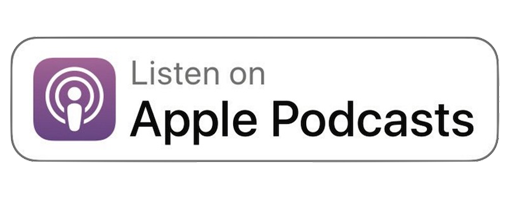Speak Clear English - Enroll Today
Episode THIRTEEN:
How to Understand Fast English Speakers
Today, you’re going to learn how to understand someone when they speak English quickly. Here’s the trick: When listening to someone speak, it’s important to focus on what words are important. But how do you know what words are important if they’re speaking quickly? I’ll tell you how in today’s episode.
Let’s start here: Have you ever been listening to an English speaker and totally did not understand anything they were saying because you thought they were talking too quickly? Have you ever missed 10 minutes of conversation because you just didn’t know what was happening anymore? Then you’re just staring at the person with a big smile, and they don’t even know that you can’t understand them?
That situation happens a lot for second language learners, actually. I’ve definitely had this problem when listening to my second language of Spanish. It can be really embarrassing to stop understanding what someone is saying. You can feel confused and alone, and you can become frustrated quickly. You probably try to focus really hard to get back in the conversation. So you start focusing on easy words you can understand like “is” or “the”, but it’s just too difficult to understand the meaning from those easy words.
This is a normal problem to have, but I also know there is a solution. The secret to amazing listening skills is this: You have to pay attention to the right words.
What are the right words?
Well, let me start by tell you about the difference between function words and content words.
What are content words?
Content words are the most important words. They carry the meaning of the sentence. Content words are words like boss, school, drive, and beautiful. These words are powerful because they give sentences their meaning.
I want you to imagine this with me: You’re at a concert. There are 10,000 people all around you. But in that crowd of 10,000 people, who do you look at during the concert? You look at the rock star with the microphone. Why? Because the singer is doing the entertaining. The singer is the only voice that really matters during a concert. The crowd is wonderful to create context for what the singer is doing, but it’s the rock star whose voice matters most.
What does that have to do with content and grammar words? Content words are the rock stars of a sentence. They are the words you should pay attention to. You shouldn’t only be looking at the crowd (aka function words, which we’ll talk about next). You should be paying attention to the rock star content words.
Content words are usually nouns, verbs, adjectives, and sometime adverbs. Here are some examples of content words: play, driving, China, slow, plants, waited. Do you see how each of these words has meaning?
We will talk about several more examples of content words, but first let’s talk about function words.
What are function words?
Think of function words like the crowd at a concert. They support the rock star, but they aren’t the ones with the microphone. Both the rock star and a great crowd are necessary for a good concert, but the content words should be the ones you’re paying attention to. Function words are usually small words like to, on, will, is, and about. Function words can be prepositions like “before” and “at”. Function words can be helping verbs like “is” and “were”. Function words can be articles, like “a”, “an”, and “the”. Function words can be conjunctions like “and”, “or”, or “though”.
Function words are important, because they give us more specific detail about the main idea of a sentence. But function words are not the main idea by themselves. Function words do not usually carry much meaning. They just hold all the content words together.
So what do content words and function words relate to listening skills? Remember how easy it is to get lost in conversation? What’s the secret to understanding fast speech?
The secret to understanding English speakers is focusing on the content words, not the function words.
Let me give you an example sentence. “My sister went to Jamaica in June.”
Which words are the content words? Hopefully you know that the content words for that sentence are “sister”, “went”, “Jamaica”, and “June”. That means the function words are “my”, “to”, and “in”.
Listen as I say only the content words for this sentence: “sister”, “went”, “Jamaica”, “June”. Did you understand the general meaning? Sure you did!
Now listen as I only say the function words for this sentence: “my”, “to”, “in”. Did you understand the real meaning of the sentence? No way!
Why? Because function words mainly just carry grammar and syntax, and they don’t carry meaning.
When you’re listening to someone, you should listen for content words.
Here’s the big question: How do you know which words are content words and which words are function words while you’re listening?
You will know when a word is an important content word, because English speakers stress content words. That means they say content words louder, higher, and clearer.
Listen again as I say this sentence “My sister went to Jamaica in June.” Did you notice that I said “sister”, “Jamaica”, and “June” higher and louder? Listen again. “My sister went to Jamaica in June.” Those content words are higher in pitch and a little louder. They are the rock stars of the sentence, so I made sure to give them the microphone.
So try out this secret. Pay attention to when a speaker says something louder and higher. That will tell you what the content words are. You can ignore function words if you get lost in a conversation. Just jump back in by listening for those rock star content words.
Happy learning!
P.S. If you want to dramatically improve your pronunciation skills, take my latest course Clear English Pronunciation. People are changing their lives by taking this course! The results have been dramatic. Simply visit StudyWithAndrea.com/speak to learn more.
Speak Clear English - Enroll Today
The following is a TOEFL Reading practice test to help you prepare for the Reading section of the TOEFL test.
Instructions: Read the sample passage below and then answer the questions that follow.
TOEFL Reading Practice Passage
Gorillas are ground-dwelling, predominantly herbivorous apes that inhabit the forest of central Sub-Saharan Africa. The genus Gorilla is divided into two species: the eastern gorillas and the western gorillas (both critically endangered), and either four or five subspecies. They are the largest living primates. The DNA of gorillas is highly similar to that of humans, from 95 to 99% depending on what is included, and they are the next closest living relatives to humans after the chimpanzees and bonobos.
Gorillas' natural habitats cover tropical or subtropical forest in Sub-Saharan Africa. Although their range covers a small percentage of Sub-Saharan Africa, gorillas cover a wide range of elevations. The mountain gorilla inhabits the Albertine Rift montane cloud forests of the Virunga Volcanoes, ranging in altitude from 2,200 to 4,300 metres (7,200 to 14,100 ft). Lowland gorillas live in dense forests and lowland swamps and marshes as low as sea level, with western lowland gorillas living in Central West African countries and eastern lowland gorillas living in the Democratic Republic of the Congo near its border with Rwanda.
(#1) Gorillas move around by knuckle-walking, although they sometimes walk upright for short distances, typically while carrying food or in defensive situations. (#2) A 2018 study investigating the hand posture of 77 mountain gorillas at Bwindi Impenetrable National Park (8% of the population) found that knuckle walking was done only 60% of the time, and they also supported their weight on their fists, the backs of their hands/feet, and on their palms/soles (with the digits flexed). (#3) Studies of gorilla handedness have yielded varying results, with some arguing for no preference for either hand, and others right-hand dominance for the general population. (#4)
The eastern gorilla is more darkly colored than the western gorilla, with the mountain gorilla being the darkest of all. The mountain gorilla also has the thickest hair. The western lowland gorilla can be brown or grayish with a reddish forehead. In addition, gorillas that live in lowland forest are more slender and agile than the more bulky mountain gorillas. The eastern gorilla also has a longer face and broader chest than the western gorilla. Like humans, gorillas have individual fingerprints. Their eye color is dark brown, framed by a black ring around the iris. Gorilla facial structure is described as mandibular prognathism, that is, the mandible protrudes farther out than the maxilla. Adult males also have a prominent sagittal crest.
A gorilla's lifespan is normally between 35 and 40 years, although zoo gorillas may live for 50 years or more. Colo, a female western gorilla at the Columbus Zoo and Aquarium, was the oldest known gorilla at 60 years of age when she died on 17 January 2017.
Questions
1. According to the passage, gorillas can live in
a. a variety of altitudes.
b. several different countries in Africa.
c. thick forests.
d. lowland forests only.
2. All of the following is true about gorillas EXCEPT
a. they primarily eat smaller animals.
b. they live in a forest habitat.
c. their genetics are similar to humans.
d. their diet consists of vegetation.
3. Look at the word predominantly in paragraph 1. The word predominantly in this passage refers to
a. impulsively
b. unfortunately
c. mainly
d. lastly
4. Look at the word inhabits in paragraph 2. The word inhabits in this passage refers to
a. lives in
b. protects
c. goes
d. works
5. The author implies that
a. most gorillas prefer using their left hand over their right.
b. gorillas rarely walk on their knuckles.
c. gorillas regularly walk upright for long distances.
d. studies haven't solidly proven which hand gorillas prefer using.
6. Why does the writer mention that the eastern gorilla also has a longer face and broader chest than the western gorilla?
a. To validate the importance a broad chest in western gorillas
b. To define the meaning of "broad"
c. To highlight a physical difference between types of gorillas
d. To demonstrate that most gorillas are identical in physical build
7. Which of the following statements is true for BOTH eastern and western gorillas.
a. Both eastern and western gorrilas are brown with red foreheads.
b. Both eastern and western gorrilas have unique fingerprints.
c. Both eastern and western gorrilas have thin hair.
d. Both eastern and western gorrilas have light brown eyes.
8. In Paragraph 3, look at the four numbers (#1, #2, #3, #4) that indicate where the following sentence would be added to the passage.
Such a range of hand postures was previously thought to have been used by only orangutans.
Where would the sentence best fit?
(View all the correct answers below.)
Great job! If you're ready to take your TOEFL preparation to the next level, go to StudyWithAndrea.com/TOEFL.
Answers: 1. d 2. a 3. c 4. a 5. d 6. c 7. b 8. #3
Click on one of the following links to start speaking clearer English!
1) TOEFL MASTER CLASS
2) free mini-course "punctuation mistakes to avoid"
3) Clear English Pronunciation Video Course
4) English Vocabulary - Audio Files & PDF - TOEFL & IELTS
About Andrea
Andrea Giordano is the founder of StudyWithAndrea.com and has taught more than 1,000,000 students from 180 countries. Andrea holds a Master of Education (TESOL) from Shenandoah University, and is the former Executive Director of TESOL and ESL programs at Campbellsville University. Andrea is a proven leader in online English teaching and is driven by her passion to help you speak English clearly.





